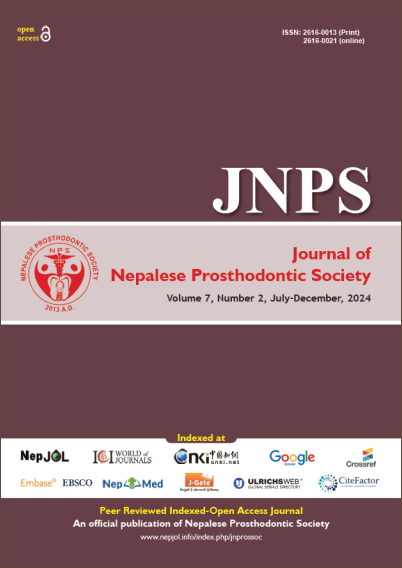Prosthetic Rehabilitation of Completely Edentulous Mandibular Knife Edge Ridge: A Case Report
DOI:
https://doi.org/10.3126/jnprossoc.v7i2.77562Keywords:
Flabby tissue, Heat-cured silicone liner, Knife edge ridge, Molloplast B, UndercutsAbstract
Patients with conventional complete dentures may encounter various challenges, such as pain and soreness, particularly in the mandibular ridge during function. These issues may be related to a knifeedge ridge, severely atrophic ridge, and thin atrophic ridge mucosa. In such cases, a conventional complete denture with a rigid denture base further aggravates the condition. Hence, a resilient liner can be incorporated into the denture to avoid this. This clinical report presents the management of a patient with knife-edge mandibular ridge, flabby tissue, and undercuts. The patient had been previously rehabilitated with multiple dentures and had stopped wearing them due to pain. In this case, prosthetic rehabilitation was performed using a removable complete denture made with a heatcuring one-component silicone permanent soft relining material (Molloplast B, Detax, Germany). The incorporation of the resilient liner into the denture serves as a shock absorber by dissipating the kinetic energy generated from the impact of masticatory forces, thereby reducing trauma to the underlying mucosa.
Downloads
Downloads
Published
How to Cite
Issue
Section
License
Copyright (c) 2024 The Author(s)

This work is licensed under a Creative Commons Attribution-NonCommercial-NoDerivatives 4.0 International License.
This license enables reusers to distribute, remix, adapt, and build upon the material in any medium or format, so long as attribution is given to the creator. © The authors




